The Compassionate Eye: Birds and Beasts from the American Museum's Print Collection
- BATH, United Kingdom
- /
- February 14, 2012
The Compassionate Eye, an exhibition of prints by American artists depicting the sympathetic relationship between man and beast, will be staged at the American Museum in Britain, Claverton Manor, Bath, from Saturday 10 March to Sunday 1 July 2012. These images, many of which will be displayed for the first time at the Museum, will be accompanied by early folio engravings after the celebrated drawings of American birds by John James Audubon (1785-1851).
The American Museum in Britain was founded by two visionary collectors, Dallas Pratt (1914-1994), a New York psychiatrist, and his partner John Judkyn (1913-1963), an English antiques dealer who took American citizenship after the Second World War. The two shared the ambition of establishing a museum in Britain to further understanding of the history of the United States and its people through the medium of American decorative arts. Collecting most of the objects themselves, they shipped them across the Atlantic and the Museum opened in 1961.
Unlike many of his medical contemporaries, Dr Pratt was morally troubled by vivisection and wrote the pioneering studies Painful Experiments on Animals (1976) and Alternatives to Pain in Experiments on Animals (1980). For his work promoting animal rights, Dr Pratt received the prestigious Animal Welfare Institute’s Albert Schweitzer Award in 1981. His print menagerie, which he donated to the Museum, was another way in which he hoped to win over public opinion to the cause of animal rights. By seeing the human interactions with birds and beasts in these artworks, Dr Pratt hoped viewers would acquire a more compassionate eye.
The comprehensive collection demonstrates many print-making techniques such as etching, lithography and serigraphy as well as lino and wood cuts. The artists represented include James Abbott McNeill Whistler (1834-1903), Frederick Stuart Church (1842-1924), Rockwell Kent (1882-1971), Thomas Hart Benton (1889-1975), Grant Wood (1892-1942), Diana Thorne (b.1895), Lynd Kendall Ward (1905-1985), Jackson Lee Nesbitt (1913-2008), William Wind McKim (1916-1995) and Leonard Baskin (1922-2000).
One of the best-known of these artists is Whistler, the American artist who lived in Britain, represented by his 1895 lithograph The Smith’s Yard. Another sympathetic image of horses, this time in deep snow, is February, a 1940 lithograph by Grant Wood, known for his iconic 1930 painting American Gothic. Wood was one of the famed Regionalist artists of the Midwest who rejected European abstraction in favour of naturalistic depictions of American rural life. Other Regionalists included Thomas Hart Benton and John Steuart Curry, whose work is also in the exhibition, the former by the dramatic depiction of a horse galloping in front of a steam train entitled The Race, 1942. One of Hart Benton’s pupils was Jackson Lee Nesbitt, whose 1946 etching November Evening is an early work based on drawings made during a sketching trip they made together in Arkansas. Benton always regarded Nesbitt as one of his finest and most gifted students. A much later work by Nesbitt is Auction Barn, a lithograph of 1989 which celebrates a bygone age of rural America.
Other rural scenes include Hungarian American Farm, a 1943 engraving by Grace Thurston Arnold Albee (1890-1985) who was born in Rhode Island but spent the inter-war years in Paris with her husband, the muralist Paul Albee, and family. After returning to the US in the 1930s, the Albees settled in Pennsylvania, where Grace began to produce images of American rural life that secured her fame as a leading American printmaker.
Dogs of all sizes feature in many prints including The Innocent – Sleeping Puppy by Diana Thorne, an illustration for Albert Payson Terhune’s book True Dog Stories. Thorne, celebrated as one of America’s most-loved canine artists, led an adventurous early life. Her family left Russia to escape anti-Jewish feeling and settled in rural Canada. As a teenager she went to study art in Germany, where she was interned as a ‘hostile alien’ during the First World War. After escaping to England, the budding artist made her way to the United States in 1917. It’s a Small World by Leo Meissner (1895-1977), a 1930 wood engraving, shows the pavement filled with walking people from a dog’s-eye view. Meissner’s wood engravings can be seen in several prestigious American museums including the Metropolitan Museum of Art in New York and the Philadelphia Museum of Art.
A happy cat can be seen in Sunbathers on the Roof, an etching from 1941 by John French Sloan (1871-1951), celebrated for his depictions of urban life and a leading member of the Ashcan School. On 8 December 1941, the United States declared war on Japan following the attack on Pearl Harbor. This idyllic scene of summertime in New York City belies the horror to come later in the year.
Not all the animals featured are domesticated. The Lone Prairie, a lithograph by William Wind McKim (1916-1995), depicts a coyote and a human skull and the title may refer to the famous cowboy ballad which includes the words O bury me not on the lone prairie / Where coyotes howl and the wind blows free…’. Only a few copies of this lithograph were printed because, as the artist noted, “the stone broke”.
A particularly touching image of the interaction between wildlife and humans is a 1969 engraving of a crouching boy tenderly holding a bird in his cupped hands entitled Day of the Hawk by Lynd Kendall Ward, who is regarded as one of the pioneers of the American graphic novel. And in her Mouth an Olive Leaf is a wood engraving of 1955 by Fritz Eichenberg, who fled Nazi Germany for New York City in 1933, where he became a prolific book illustrator celebrated for masterly wood engravings which often display humour as well as great artistry.
Birds also feature in Self-portrait of Me Improved, 1923, by Rockwell Kent, an artist, author, adventurer, and activist who was targeted by Senator Joseph McCarthy’s House Un-American Activities Committee. This self-portrait shows him playing a flute to a bird fluttering beside him while another bird perches on the end of the instrument. Frederick Stuart Church’s 1883 engraving A Lesson in Wisdom depicts a seated woman with a row of owls. After fighting for the Union in the American Civil War, the staunchly patriotic artist is best remembered for his anthropomorphic allegories of animals and birds.
The Compassionate Eye: Birds and Beasts from the American Museum’s Print Collection will surely fulfil Dr Pratt’s wish that people should be encouraged to cherish animals and all wildlife as well as engaging visitors with the delightful images by so many talented artists.
American Museum in Britain, Claverton Manor, Bath, BA2 7BD, UNITED KINGDOM





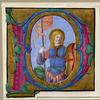
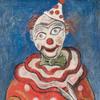
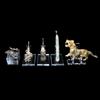

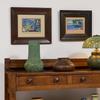
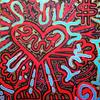



__Buffalo_Hunt100x100_c.jpg)
